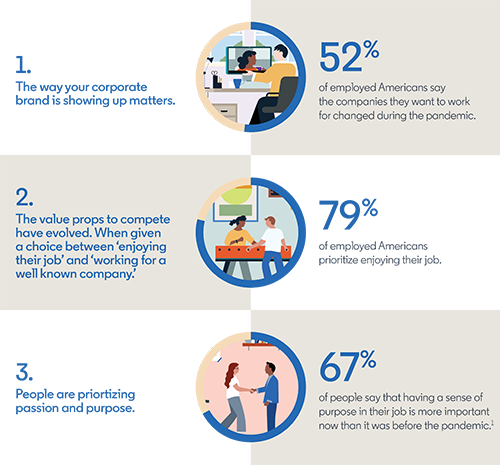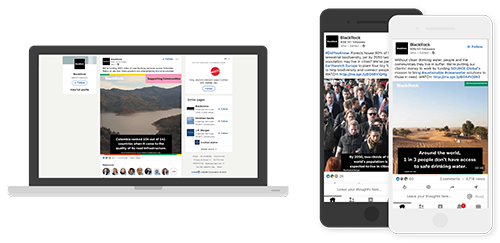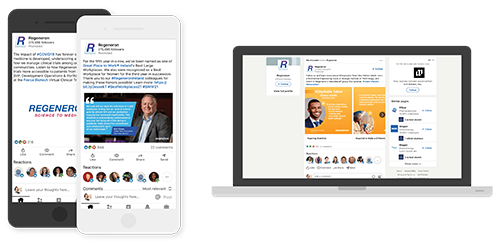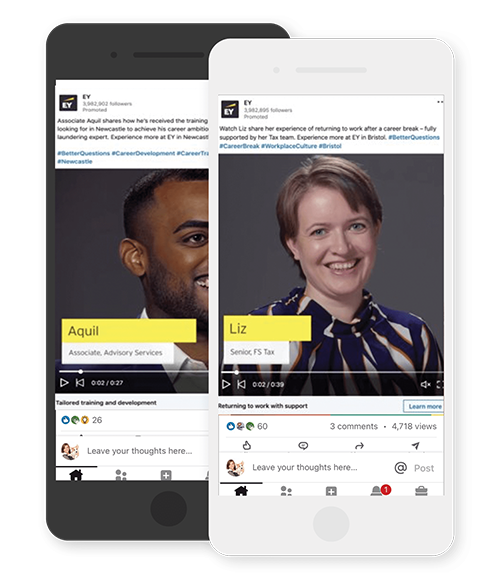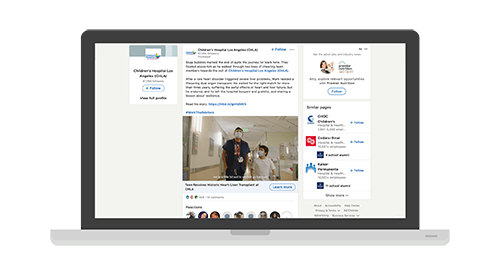Trends, tips, and best practices
LinkedIn Is the Leading Platform for Marketing Teams to Attract Top Talent
According to Microsoft’s Work Trend research, much of the workforce “sheltered in job” during the pandemic.
This was an expected reaction, as questions around how long the crisis would last and how it would affect long-term business were difficult to answer.
Now, with more people being vaccinated and the relaxing of pandemic rules, the employment floodgates have opened and workers are feeling like they are in the driver’s seat more so than they have been for years.
We looked more deeply at the root causes of the talent migration in this blog.
Even in normal times, the average job turnover rate for the US is 15-20%, according to the US Bureau of Labor Statistics. But the Work Trend research revealed that, this year, 41% of employees are considering leaving their positions. The media is calling it the “Great Resignation.”
No matter the label, employers vying for the best talent will tout flexible hours, competitive pay, and other concrete benefits, but job seekers are increasingly looking for more. They want to work at places that reflect their values. In a job market favoring talent, the top prospects will accept offers from organizations that can clearly articulate mission, purpose, and vision. That’s why the looming talent migration is a challenge that involves not only recruiters and human resources professionals, but marketers as well.
It’s Not Just What You Do, It’s Why You Do It.
As a marketer in an organization vying for the best talent, there are three things to consider.
To see how BlackRock is sharing its purpose with a wide audience, read this Q&A with BlackRock’s Global CMO.
The bottom line is that the strength of your employer brand will determine whether you win or lose in the post-pandemic job market. This is why 64% of talent professionals expect their employer branding budget to increase or stay the same in the year to come.
Recruiters Are Marketers and Marketers Are Recruiters
How Candidate Experience Hit Virgin Media’s Bottom Line
Virgin Media conducted a study to determine whether its candidate experience was hurting its overall business earnings. They found that a poor candidate experience was negatively impacting their bottom line because a large share of candidates were so turned off by their bad experience that they switched to a competitor directly after.
Customers are less inclined to purchase from a company with a reputation for treating its employees poorly, while candidates tend to stay away from organizations with a bad corporate and product brand. By investing in employer branding, you simultaneously raise the value of the overall brand and attract customers as well.
Great Hires Don’t Just Happen. They Require a Journey.
Measuring success starts with measuring where a candidate journey begins and what touchpoints lead talent to you as a future employer. The median journey length is over eight months from initial touchpoint to hire. And the median number of interactions a candidate will have with a brand they eventually join is a whopping 64. Every touchpoint matters in building relationships with potential candidates.
Embracing a Holistic Strategy
Investing in a holistic recruitment marketing strategy will help grow your business for the following reasons:
Hum. Sing. Shout.
Knowing when and how often to reach candidates is also important. In thinking about the cadence of the content released to connect with talent, we like to think of three buckets:
- Hum – your always-on approach to content
- Sing – regularly scheduled posts — perhaps it’s once a month or once a quarter where you talk about a certain topic
- Shout – demand campaigns around timely topics and key initiatives
You’re going to want to take an always-on approach for brand, and intersperse that with “shout” hiring campaigns around key months, such as graduation in spring and early summer.
Know When to Shout
To get a true picture of the current employment market, it’s important to look at historical trends. Across industries and jobs, we normally see two spikes in job posting activity. The first is in March and is tied to corporate and fiscal year talent review cycles. The second spike is from August to October and is tied to entry level jobs and the starting of classes.3
We did not see those same levels of attrition last year. When current job-holders were asked about their top motivations for staying in their current roles, 74% chose answers that amounted to some variant of “shelter in job.” Ambition isn’t dead, but for people in steady jobs, it might be hibernating.
The Journey From Brand to Demand
As with your core marketing strategy, you need both brand and demand approaches to engaging with potential candidates.
The best practice for brand marketing is 60% of the spend. Those efforts will help establish a brand as an employer of choice. It will include broadly targeted awareness campaigns to differentiate your culture and build affinity toward your organization for future pipeline (new geos, talent pools, etc).
Some of the tactics should include:
- Thought leadership
- Corporate social responsibility
- Mission and vision communications
Winning Brand Content
BlackRock illustrates their brand purpose and what sets them apart with specifics on their sustainable investing offering.
Regeneron promotes their company culture by highlighting recognition as a “great place
to work” and employee perspectives.
The best practice for demand marketing is 40% of the spend. These efforts are all about conversion — capturing demand for planned headcount or unplanned demand. The targeting narrows to create urgency for individuals already engaged with your organization to enable immediate growth.
The messaging here includes:
- “Apply now”
- Company culture
- Talent spotlight ads
Winning Brand Content
EY employees share how their employer uniquely supports them.
CHLA shares their mission through compelling patient success stories.
5 Habits of Highly Effective Talent Marketers
- Show up with a strong, consistent, and differentiated brand voice and personality. Hone your voice, tone, and visual guidelines.
- Show, don’t tell, your brand purpose. Why do you exist as a brand? How are you living your mission and vision? Take a stand on issues that are top-of-mind for your audiences.
- Invest in your community and relationships. Celebrate your employees and give them a platform to tell their stories.
- Practice radical transparency with candidates, investors, and your customers.
- Serve as a utility information source. How are you protecting the well-being and financial security of your employees?
Final Thoughts
We understand that, as a marketer, your main concerns are brand awareness, sales, and keeping shareholders happy. But brand building also helps attract and retain talent. As the massive talent migration that is predicted unfolds over the next year or more, organizations will need to fight for the best talent. LinkedIn Marketing Solutions can help your organization at every step of that journey that leads sought-after individuals from prospect, to candidate, to new hire.
For more insight into how brand drives demand, subscribe to the LinkedIn Marketing Solutions blog.
Topics: Trends, tips, and best practices
Related articles



